A Potter's Book: Faber Finds
Autor Bernard Leachen Limba Engleză Paperback – 22 feb 2012
Bernard Leach (1887-1979) is generally reckoned to be the 'father of British studio pottery.' Born in Hong Kong, profoundly influenced by both an upbringing and studies in Japan, Leach developed a vision of pottery that interwove art, craft, design and philosophy. In 1920 he co-founded the Leach Pottery in St Ives, Cornwall, and A Potter's Book was first published in 1940. Within these pages Leach communicates his deeply-held convictions, through an account of the standards and materials essential to English slipware, stoneware, Japanese raku and Oriental porcelain.
Faber Finds is devoted to restoring to readers a wealth of lost or neglected classics and authors of distinction. The range embraces fiction, non-fiction, the arts and children's books. For a full list of available titles visit www.faberfinds.co.uk. To join the dialogue with fellow book-lovers please see our blog, www.faberfindsblog.co.uk.
| Toate formatele și edițiile | Preț | Express |
|---|---|---|
| Paperback (1) | 124.89 lei 6-8 săpt. | |
| Faber and Faber – 22 feb 2012 | 124.89 lei 6-8 săpt. | |
| Hardback (1) | 174.54 lei 3-5 săpt. | +42.83 lei 4-10 zile |
| Unicorn Publishing Group – dec 2014 | 174.54 lei 3-5 săpt. | +42.83 lei 4-10 zile |
Preț: 124.89 lei
Nou
Puncte Express: 187
Preț estimativ în valută:
23.90€ • 25.95$ • 20.08£
23.90€ • 25.95$ • 20.08£
Carte tipărită la comandă
Livrare economică 22 aprilie-06 mai
Preluare comenzi: 021 569.72.76
Specificații
ISBN-13: 9780571283675
ISBN-10: 0571283675
Pagini: 374
Dimensiuni: 127 x 203 x 21 mm
Greutate: 0.41 kg
Editura: Faber and Faber
Seria Faber Finds
ISBN-10: 0571283675
Pagini: 374
Dimensiuni: 127 x 203 x 21 mm
Greutate: 0.41 kg
Editura: Faber and Faber
Seria Faber Finds
Notă biografică
Bernard Leach (1887-1979) was one of the most influential figures in twentieth-century pottery. Born in Hong Kong and brought up in Japan, Hong Kong and England, he trained at the London School of Art and moved to Japan in 1909, where he studied pottery techniques. In 1920 on his return to England he founded the Leach Pottery with Shoji Hamada in St Ives, Cornwall. His best-known work, A Potter's Book, was first published in 1940.
Cuprins
The Leach Legacy by Philip Leach
Leach in Japan by Soyetsu Yanagi
Preface by Michael Cardew
Author’s Preface
1. Towards a Standard
2. Raku - English Slipware - Stoneware - Porcelain
3. Clays
4. The Making of Clay Shapes
5. Decoration
6. Pigments and Glazes
7. Kilns
8. The Workshop
Footnotes
Appendix A - Potters Terms, Tools & Materials
Appendix B - Conversion Charts
Appendix C - Seger Pyrometric Cones
Image Credits
Index
Leach in Japan by Soyetsu Yanagi
Preface by Michael Cardew
Author’s Preface
1. Towards a Standard
2. Raku - English Slipware - Stoneware - Porcelain
3. Clays
4. The Making of Clay Shapes
5. Decoration
6. Pigments and Glazes
7. Kilns
8. The Workshop
Footnotes
Appendix A - Potters Terms, Tools & Materials
Appendix B - Conversion Charts
Appendix C - Seger Pyrometric Cones
Image Credits
Index
Recenzii
“With his writings as well as with his ceramics, Leach played a major role in elevating the status of the European potter from craftsman to artist, thereby paving the way for the twentieth-century studio pottery movement.”
"This updated edition of the classic by Leach (British potter and teacher) belongs on every ceramist’s bookshelf. Minor text changes, a look at Leach’s impact on the West, and numerous color photographs make this an even more valuable resource than the 1940 original.
Highly recommended."
Highly recommended."
"This fine new edition of A Potter’s Book, first published in 1940, shows representative images of his work (and sometimes his son David’s) alongside Japanese or Korean wares made from similar bodies or using similar glazes. It is always easy to spot the Leach."
"This edition, published 75 years after the first edition in 1940, remains faithful to Leach’s text, while also including color versions of the original images (where available), color images of his pots, and additional images to clarify various points. A preface by Leach’s grandson, Philip Leach, updates the family’s story and frames the important role this book has played in countless potters’ lives."
"Despite the idiosyncrasy of Leach’s East-meets-West output and ideas, he expressed these so often and with such solemn conviction in numerous books, talks and tours that by the 1950s they had become doctrine. A Potter’s Book (1940) had the greatest impact: even today, its mixture of poetry, philosophy and practical instruction earns it the soubriquet 'the potter’s bible'."

















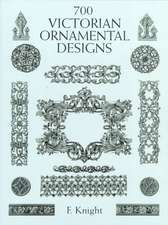
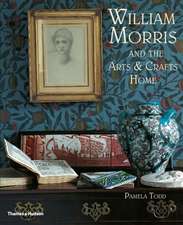

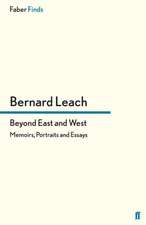
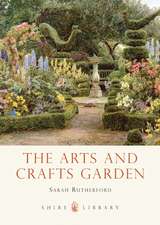
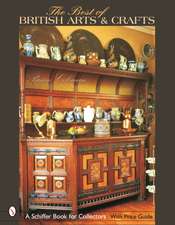









![Simon Leach's Pottery Handbook [With 2 DVDs]: A Master Class in Increases, Decreases, and Other Forms of Shaping with 20+ Projects](https://i2.books-express.ro/bt/9781617690228/simon-leach-s-pottery-handbook-with-2-dvds.jpg)